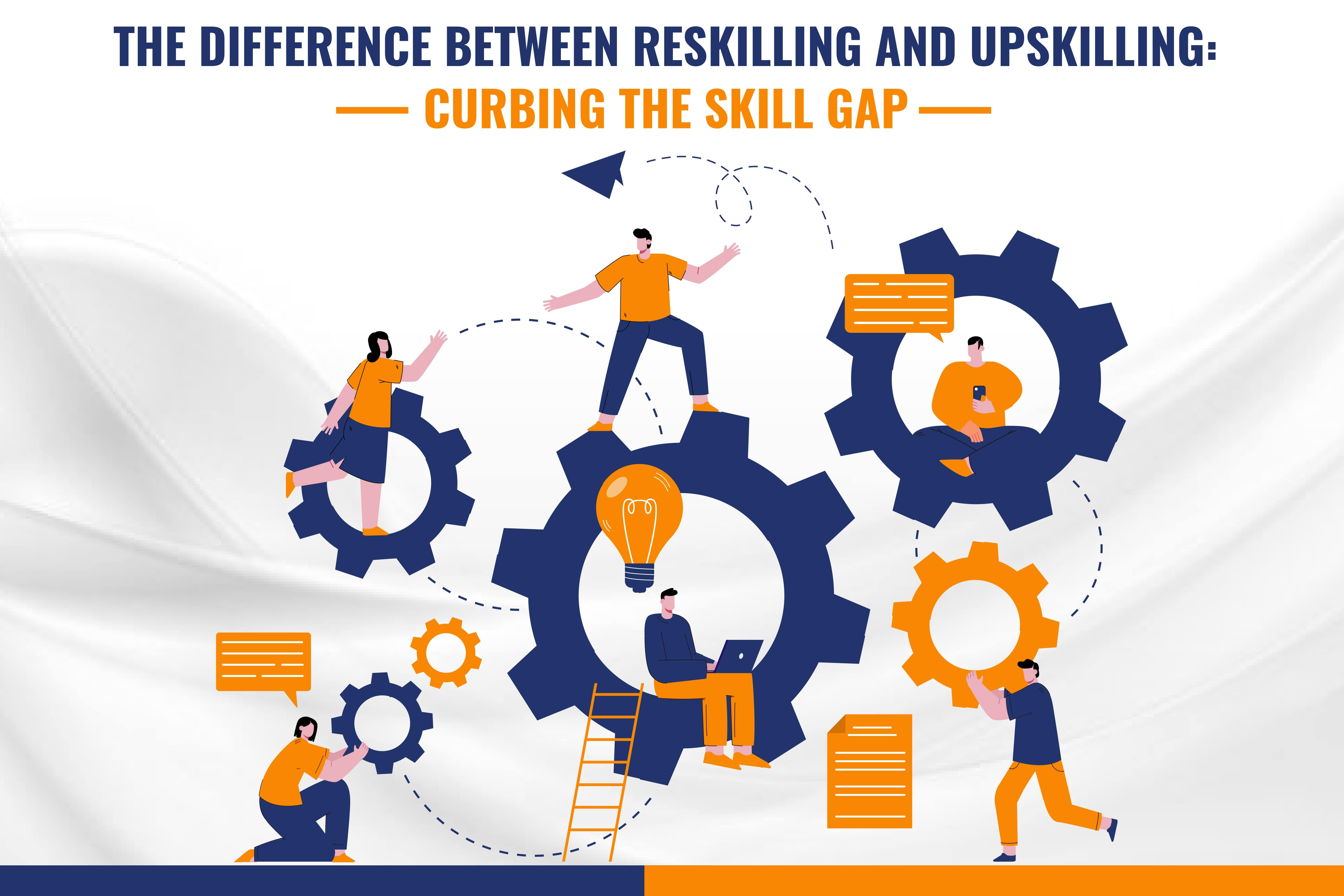
The Difference Between Reskilling And Upskilling: Curbing The Skill Gap
In today's rapidly evolving job market, the need for continuous learning and skill development has never been more apparent. As technology advances, industries change, and job roles evolve, employees and job seekers alike are faced with the challenge of keeping up with these shifts. Two terms that often come up in discussions about skill development are "reskilling" and "upskilling." While they both aim to bridge the skill gap, they have distinct differences in their objectives and approaches. In this article, we will delve into the differences between reskilling and upskilling and explore their critical roles in addressing the skill gap.
Reskilling and Upskilling: The Difference and The Role
Reskilling: Navigating Career Transitions
Reskilling refers to the process of learning entirely new skills or acquiring qualifications to transition into a different job or career. This is often necessary when an individual's current skills become obsolete or when they wish to pivot into a different industry. Reskilling is a more radical form of skill development compared to upskilling, as it involves a more comprehensive shift in one's career trajectory.
The Need for Reskilling
The need for reskilling is most evident in industries heavily impacted by technological advancements and automation. For example, manufacturing jobs that were once labor-intensive have been replaced by robots and automation systems. Workers in such industries may need to reskill through appropriate Leadership Skills Development Training to remain employable. Similarly, individuals in declining industries, such as fossil fuel-based energy, may opt for reskilling to transition into renewable energy sectors.
Reskilling Programs
Reskilling programs are often intensive and require a significant time commitment. These programs may include earning new degrees or certifications, attending boot camps, or undergoing on-the-job training in entirely new roles. Government initiatives, private organizations, and educational institutions are increasingly offering reskilling opportunities in the form of Corporate Leadership Development Program and others to help individuals navigate career transitions successfully.
Upskilling: Enhancing Existing Skills
Upskilling, on the other hand, focuses on improving and expanding one's existing skill set. It aims to keep individuals competitive in their current roles or prepare them for future advancements within their chosen field. Unlike reskilling, upskilling doesn't require a complete shift in career direction; instead, it aims to make employees more proficient in their current roles.
The Need for Upskilling
In our fast-paced world, the skill requirements for many jobs continually evolve. Advancements in technology and changes in industry best practices mean that what was a valuable skill today might become outdated tomorrow. This is where upskilling comes into play. For example, a marketing professional may need to upskill to stay current with the latest digital marketing trends, while a healthcare worker may require ongoing training to learn how to use new medical equipment effectively. Similarly in the corporate world, a professional would need a good Corporate Leadership Development Program to stay competent.
Upskilling Programs
Upskilling programs are typically shorter and less intensive compared to reskilling programs. They can include workshops, online courses, certifications, and on-the-job training opportunities. Employers often encourage upskilling to ensure that their workforce remains competitive and adaptable. Many companies have training budgets specifically allocated for upskilling initiatives.
Key Differences
Objective:
The primary objective of reskilling is to transition into a different career or job role while upskilling aims to enhance and update existing skills to excel in the current role.
Scope:
Reskilling requires individuals to learn entirely new skills, which often involves more substantial time and effort. Upskilling involves improving existing skills, which may be less time-consuming.
Career Path:
Reskilling often involves a change in career trajectory while upskilling is typically aimed at career advancement within the same field.
Intensity:
Reskilling is usually a more intensive process, often requiring individuals to pursue formal education or Leadership Training and Development in a new area. Upskilling is often less intensive and can be integrated into one's current job.
Industry Trends:
Reskilling is common in industries undergoing significant transformations or facing disruptions. Upskilling is relevant in any field where skills are continually evolving.
Curbing the Skill Gap
Both reskilling and upskilling play pivotal roles in curbing the skill gap, which is the disparity between the skills employees possess and the skills demanded by employers. By addressing this gap, individuals can remain employable and competitive, while organizations can ensure a skilled and adaptable workforce.
Reskilling is crucial for individuals who face the threat of job displacement due to automation or changes in their industries. By investing in reskilling programs or relevant Leadership Skills Development Training and technical training, they can transition into new roles that are in demand, reducing the risk of unemployment.
Upskilling is equally important for those who wish to excel in their current positions. By staying up-to-date with the latest industry trends and technologies, employees can contribute more effectively to their organizations, increasing their job security and opportunities for career advancement.
Wrapping Up
In a world where change is constant, reskilling and upskilling are not just buzzwords but essential strategies for personal and professional growth. The key to remaining relevant in the job market is understanding the differences between these two approaches and applying them strategically to one's career journey. By embracing both reskilling and upskilling, individuals and organizations can bridge the skill gap and thrive in an ever-evolving landscape.
